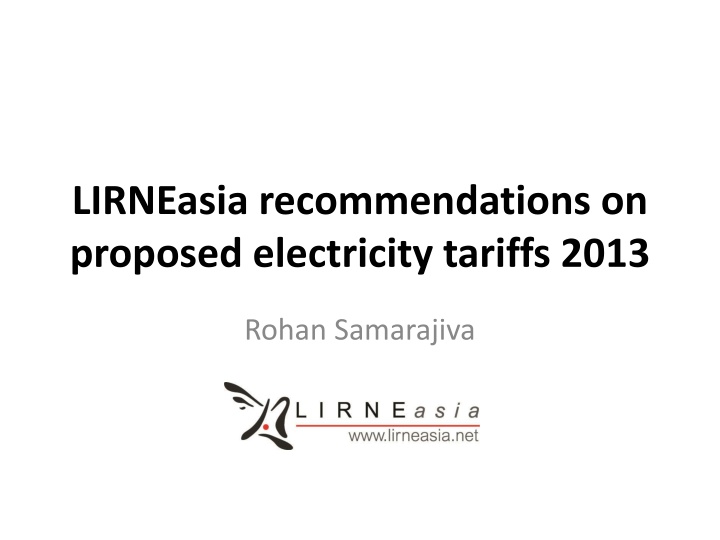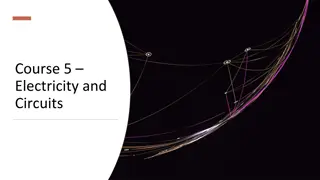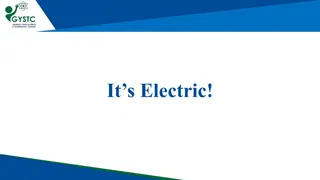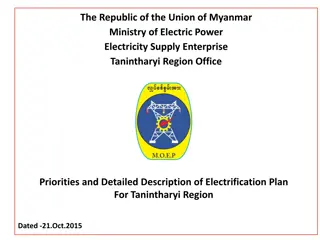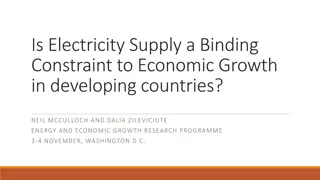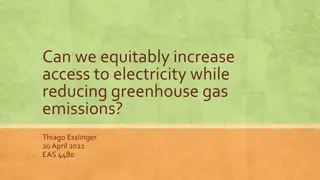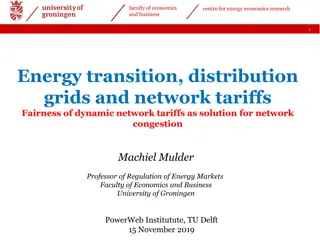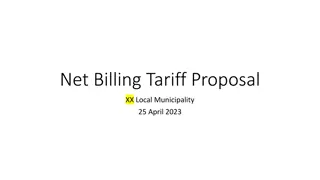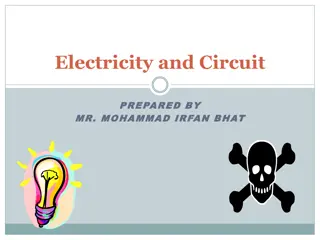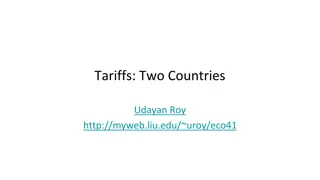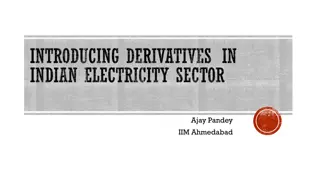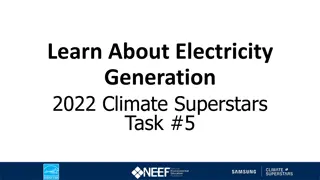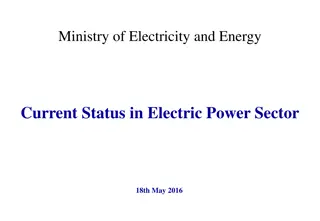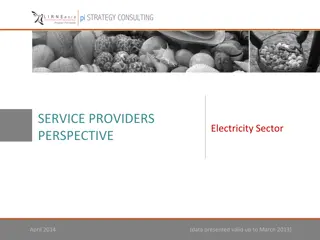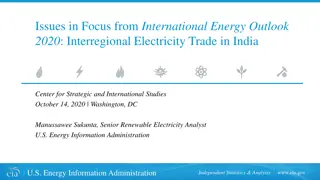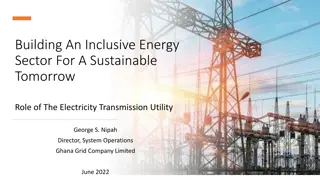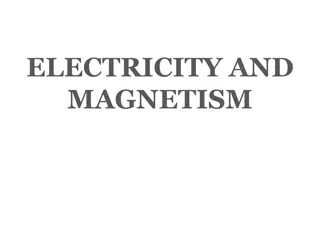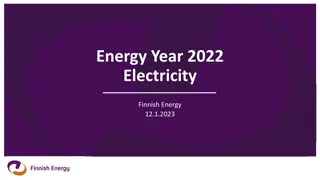LIRNEasia Recommendations on Proposed Electricity Tariffs 2013
Providing insights on short-term, mid-term, and long-term recommendations on electricity tariffs, highlighting the importance of cost-reflective tariffs and managing demand efficiently for consumers and government policies. Addressing issues such as reducing consumption during peak hours, rebates for consumers, introducing time-of-day metering, and the impact of tariff increases on consumers.
Uploaded on Mar 12, 2025 | 0 Views
Download Presentation

Please find below an Image/Link to download the presentation.
The content on the website is provided AS IS for your information and personal use only. It may not be sold, licensed, or shared on other websites without obtaining consent from the author.If you encounter any issues during the download, it is possible that the publisher has removed the file from their server.
You are allowed to download the files provided on this website for personal or commercial use, subject to the condition that they are used lawfully. All files are the property of their respective owners.
The content on the website is provided AS IS for your information and personal use only. It may not be sold, licensed, or shared on other websites without obtaining consent from the author.
E N D
Presentation Transcript
LIRNEasia recommendations on proposed electricity tariffs 2013 Rohan Samarajiva
Our recommendations Short Term 1-2 months Mid term within 1 year Long term 2 + years Create awareness to reduce consumption during peak hours Rebates for consumers from cost reductions due to DSM & Norochcholai II, while maintaining the principle of bringing tariffs closer to costs Implement time of day metering Reduction in cost of electricity supply Reconsider rule allowing only 20% from one source Increase night time consumption Introduce smart and pre- paid meters Expedite cable connecting system to S Indian grid New bill format Accept proposed tariff design Reduce tariff bands and categories Implement cost based (time of day pricing) Alternative tariff structure Provide LKR 150 for Samurdhi beneficiaries to meet the increase in expenditure Subsidize religious institutions through Ministry of Buddha Sasana & Religious Affairs Subsidy
We support the new tariff design As the beginning of a multi-year process to establish cost-reflective tariffs Because it creates strong incentives for managing demand which is of critical importance until Norochchalai II is operational But we are not focusing on the specific numbers proposed by CEB
Last 5% of supply needed to meet peak demand is as expensive as first 50% of supply When 5% = 50% (2011 data) 100% 90% 95%, 83% Share of Cost incurred by CEB 80% 70% 60% 50% 40% 30% 20% 49%, 17% 10% 0% 0% 5% 10% 15% 20% 25% 30% 35% 40% 45% 50% 55% 60% 65% 70% 75% 80% 85% 90% 95%100% Share of Energy Purchased by CEB
Tariff increase will cause significant short-term pain for consumers as past policy mistakes are remedied But fairness requires that pleasure is shared as well as pain Assess actual consumption patterns and costs If peak demand is lowered, give rebates to consumers Costs will radically decline when Norochchalai II becomes operational Use some savings to repay loans but give customers a rebate, while maintaining movement toward cost- reflective tariff design
Immediate remedy: Rs. 150 subsidy to Samurdhi recipients Why Samurdhi? Means-tested recipient group Easy cash transfer possible Consuming under 50 units = energy poor Cost today for 50 units = 308.4 Cost under proposed tariff = 465 Difference ~ Rs. 150 = subsidy per family per month ~LKR 2.7 billion in total subsidy for ~1.5 million households on Samurdhi
Our recommendations Short Term 1-2 months Mid term within 1 year Long term 2 + years Create awareness to reduce consumption during peak hours Rebates for consumers from cost reductions due to DSM & Norochcholai II, while maintaining the principle of bringing tariffs closer to costs Implement time of day metering Reduction in cost of electricity supply Reconsider rule allowing only 20% from one source Increase night time consumption Introduce smart and pre- paid meters Expedite cable connecting system to S Indian grid New bill format Accept proposed tariff design Reduce tariff bands and categories Implement cost based (time of day pricing) Alternative tariff structure Provide LKR 150 for Samurdhi beneficiaries to meet the increase in expenditure Subsidize religious institutions through Ministry of Buddha Sasana & Religious Affairs Subsidy
